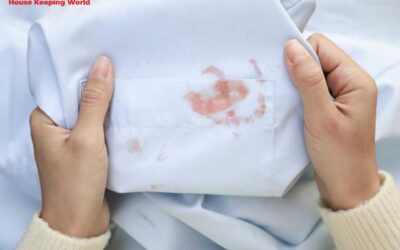Let’s be honest. It’s effortless to throw items in the washer with some detergent. It’s those stubborn stains that really cause the problems. fortunately, if you follow these ten basic tips, you can confidently manage any laundry stain on your loving clothing.
Tips you need to follow
1. Take Immediate Action
Fresh stains are easier to remove than dried ones for sure. So you must treat stains as fast as possible if you want to restore a new look on the fabric. To treat stains immediately, create an emergency stain removal kit with white towels, water, and a stain removal pen or wipes. If stains have dried and set in, they can still be removed, but may take longer or require repeated treatments. So work on fresh stains first if dealing with a pile of clothes.
2. Remove spills
No one is free of spills. And these spills stuck with us like forever as grease stains. Want to get rid of grease stains? use a clean white cloth, paper towel, or white bread to blot up excess liquid. Avoid rubbing the stain area with a linty cloth or dark-colored cloth, as it may worsen the situation. For thick spills, gently lift away excess solids with a dull knife, metal spatula, or credit card. Avoid rubbing oily foods like mustard or salad dressing, as it pushes the stain deeper into fabric fibers. Removing some solids like mud may be easier after the stain has dried. Brush off excess before washing.
3. Choose the Right Water Temperature
To effectively remove stains, start by washing with cold water, as hot water can set proteins like milk, egg, or blood, cooking them into the fibers. Hot water is best for known oily stains like mayonnaise or butter, especially on man-made fibers like polyester. Always read product and clothing care labels before taking action, and stick with warm water if you think it’s best for the fabric. The temperature of hot water should be between 120 and 140 degrees F, warm water between 85 and 105 degrees F, and cold water between 65 and 75 degrees F.
4. Skip the Soap
Avoid using soap or liquid hand soap To remove stains from fabric. Soap can set stains like berries, fruit, or vegetables. Instead, rub liquid dishwashing or laundry detergent into the stained area before washing. If detergent isn’t available, hold the fabric under a sink faucet with full-blast water and flush the stain from the back side of the fabric. it helps to push the stain out of the fabric fibers.
5. Check Laundry Before Washing
Check Laundry before washing to ensure your family’s clothes are clean and free from stains. Teach your family to identify stains or mark them with a clothespin. Many stains require pretreatment and heavy-duty liquid laundry detergents like Tide or Persil can be used to remove them. Work the detergent into the stain with a soft-bristled brush or fingers, letting it sit for 10-15 minutes before washing. These detergents have enzymes that break apart most stains and flush them away.
6. Never Dry a Stain
Stains can easily slip through, but inspecting wet laundry before putting it in the dryer can help prevent permanent staining. If a stain remains, reapply a laundry stain remover, let it soak for a while, and then rewash. The same principle applies to ironing, as heat can permanently set the stain into the fabric. Always avoid drying a stained garment or ironing.
7. Stain Remover Works as Magic
An enzyme-based product is a crucial treatment for fabric stain removal. It breaks the bonds between the stain and fabric, ensuring no color or finish issues. Test the product on a seam or hidden area to ensure it doesn’t affect the fabric’s color or finish. For silk and fabric that may not be colorfast, wait 10 to 15 minutes before washing to allow the pretreatment time to work. This ensures the stain is effectively removed and the stain is removed.
8. A Gentle Touch
try to avoid vigorous rubbing if you are working with a stain remover unless the fabric is tough and durable like denim. you don’t need to scrub aggressively because products for removing stains are very effective nowadays. Excessive rubbing can cause damage to your lovely fabric.
9. Divide and Conquer
Wash items with heavy stains separately for the best outcomes. This means that extremely dirty work clothes or muddy play clothes for kids shouldn’t be washed together. separate the excessively dirty and less dirty clothes and also wash them separately.
10. Check Your Settings
If you use too little detergent, the water temperature is too low, the washing duration is too short, or the washer is overloaded, soil and stains tend to reappear on cleaner items throughout the wash cycle. Make sure you are selecting the best settings for those clothes by checking the settings on your washing machine before every load.

Image From Freepik
